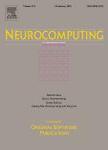版权所有:内蒙古大学图书馆 技术提供:维普资讯• 智图
内蒙古自治区呼和浩特市赛罕区大学西街235号 邮编: 010021

作者机构:Ilmenau Univ Technol Neuroinformat & Cognit Robot Lab D-98693 Ilmenau Germany Honda Res Inst Europe GmbH D-63073 Offenbach Germany
出 版 物:《NEUROCOMPUTING》 (神经计算)
年 卷 期:2014年第124卷
页 面:22-32页
核心收录:
学科分类:08[工学] 0812[工学-计算机科学与技术(可授工学、理学学位)]
主 题:Non-negative matrix factorization Time series Human motion Sparse coding Prediction
摘 要:We use shift-invariant Non-negative Matrix Factorization (NMF) for decomposing continuous-valued time series into a number of characteristic primitives, i.e. the basis vectors, and their activations, which results in a model-independent and fully data driven parts-based representation. We interpret the basis vectors as short parts of motion that are shared between all trajectories in the data set, and the activations as onset times of those parts. The extension of the shift-invariant NMF by a new competition term between adjacent activations allows to gain temporally isolated activation events, which further supports this interpretation. We show that the resulting sparse and compact representation can be used for the prediction of motion trajectories, and that it can be beneficial for classification, because it allows the application of simple standard classification models with few parameters. In this paper we show that basis vectors can be extracted, which can be interpreted as short motion segments. We present results on trajectory prediction, and show that the sparse representation can be used for classification of trajectories of a single joint, like the one of a hand, obtained by motion capturing. (C) 2013 Elsevier B.V. All rights reserved.